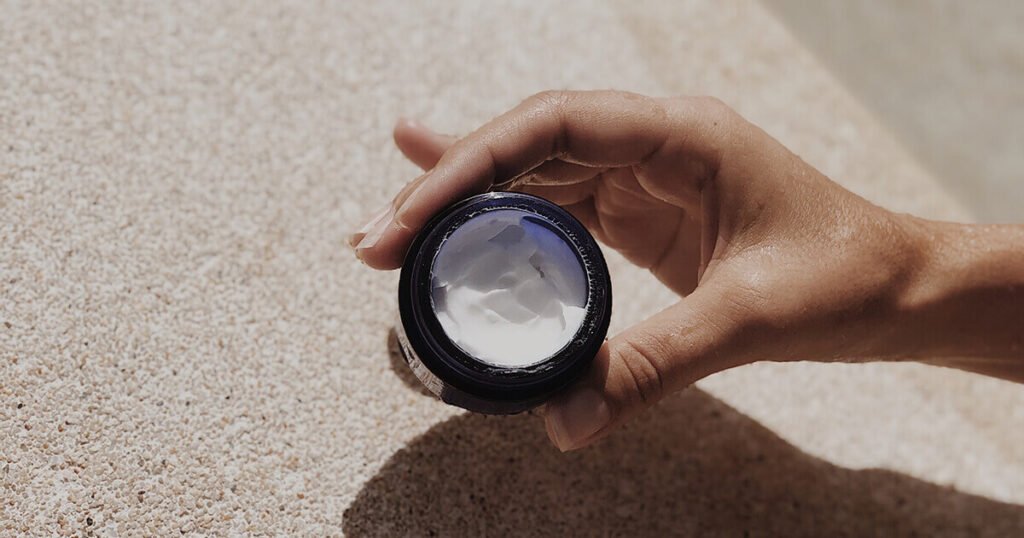Why is topical hemp mentioned in the papyri of the Egyptians? Why is it on the stone tablets of the Assyrians? Why has hemp been used as a topical in India for at least the last 3,000 years?
Because it works.
There’s an immense amount of research on how the human endocannabinoid system is involved in the maintenance and homeostasis of our largest organ, the skin.
But a CBD oil balm is not defined by its hemp alone. The other ingredients in CBD balm are what make it a top-shelf CBD product, especially for soothing skin.
What is CBD?
CBD is one of many active compounds found in the cannabis plant.
CBD does not have any psychoactive properties, unlike delta-9-tetrahydrocannabinol (THC), which is another well-known cannabinoid found in the C. Sativa plant. THC is the chemical responsible for the “high” that many people associate with cannabis. So, CBD will not get you high.
Cannabidiol (CBD) is being pumped into tons of different types of products these days and becoming an increasingly popular ingredient to include in a variety of products. This is due to its numerous potential health benefits. As CBD may be beneficial for the skin, many manufacturers are creating balms that contain CBD.
So far, the studies suggest that CBD boasts these benefits:
- improve sleep
- help pain and anxiety
- contains anti-inflammatory properties
- can help reduce seizures in people with epilepsy
- help with depression
- chronic pain
- acne
While you can take CBD through CBD edibles like pills, capsules, or gummies, you might also want to try a TROPICAL PRODUCT like a balm. Topicals can be applied directly to a localized point of soreness or pain. They can even be a relaxing part of a bedtime routine.
What is CBD balm?

CBD balms are often thick and waxy. Unlike CBD salves, which tend to be a bit softer than balms.
Both salves and balms tend to use CBD oils and waxes as base ingredients, while creams and lotions typically use water. Balms are a concentrated product, making them a great go-to choice for pain relief.
A balm is a topical skincare product usually containing butter, waxes, oils, and active ingredients. Balms are similar to creams, but they do not contain water. Popular ingredients in balms include shea butter and beeswax.
What does CBD balm do?
CBD balms, like other CBD topicals, are intended to be used directly on your skin. They’re meant to apply relief to a specific area.
Studies on topicals suggest that skin absorbency is pretty weak compared with other mucous membranes. That means when applying a topical product, it’s best to select one with a high level of CBD and apply it liberally.
When applied to the skin, CBD balm works in several ways. First is the physical and warming action associated with massaging it.
The action of rubbing stimulates nerve endings in the area and helps to overwhelm underlying pain signals, so the perception of discomfort is reduced. When rubbing is combined with an active ingredient that sinks into the skin the benefits are multiplied for reducing aches and pains.
CBD interacts with your own endocannabinoid system. Endocannabinoid receptors are found throughout the body, including in skin cells, skin nerve fibers, hair follicles, and oil and sweat glands.
Skin conditions
In addition to helping with physical pain, CBD balms may be beneficial for certain skin conditions.
The American Academy of Dermatology mentions that topical CBD products show potential for reducing inflammation that can contribute to acne, eczema, and psoriasis.
Pain relief
Applying CBD products that offer extra pain-relieving ingredients like menthol, camphor and capsaicin may deliver even more therapeutic effects to the applied areas.
Other health benefits
Topical CBD products, like balms, can help with a range of pain issues like:
- Nerve pain. A 2020 study examined topical CBD oil’s impact on pain. In the study, people with nerve damage all reported lower levels of pain, noticing a drop in sharp, severe, cold, and itchy feelings of pain.
- Arthritis-related pain. CBD gel applied to the skin significantly lowered joint swelling.
- Jaw pain. Topical CBD may help with a certain type of facial pain that largely involves the jaw. Researchers discovered that those who used topical CBD around twice daily experienced reduced pain after 2 weeks.
How to use CBD balm
Balms are intended to be applied as you would a normal moisturizer — gently massage it into the area you’re treating and add more as needed.
You can find CBD balms in a variety of strengths. Topicals like balms can be a little hard to dose since they’re not as straightforward as, for example, a CBD gummy.
But in general, dosage depends on a number of factors, including your experience with CBD products, your body weight, the potency of the product, and the condition you’re treating.
If you’re new to CBD, it’s best to start with the lowest possible dose and see how your body responds.
Safety and side effects
It’s a good idea to talk to your doctor before trying CBD, especially if you’re taking any medications, as CBD may interact with some medications.
Don’t use topicals on broken skin. Perform a patch test to make sure you don’t have any allergic reactions before using the product on larger areas of your skin.
To do a patch test, you’ll simply place a little bit of the balm on the inside of your wrist. Wait 24 hours to see how your skin responds. If you notice any signs of irritation, such as redness or itchiness, discontinue use of the product.










